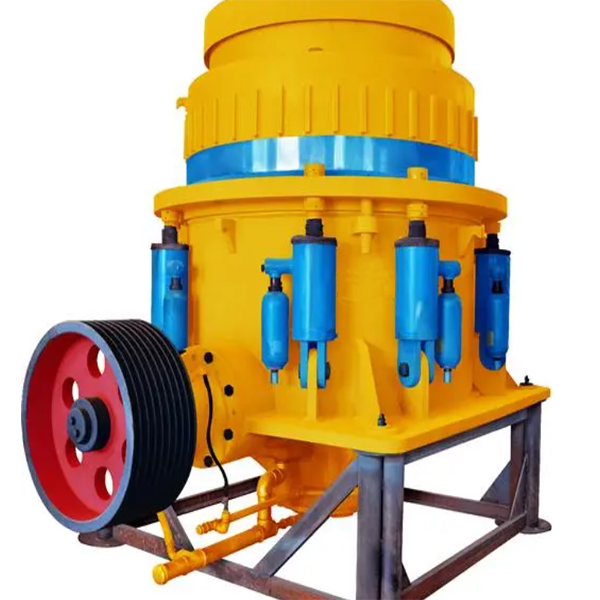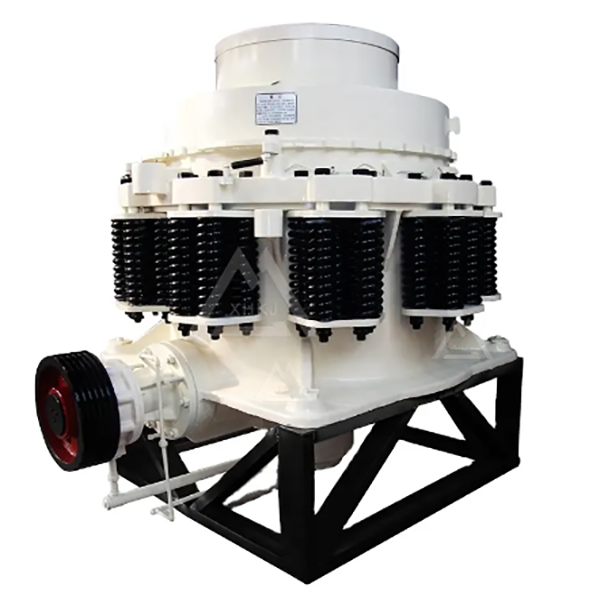Spring Cone Crusher
The Symons cone crusher, an upgraded replacement for PY series spring cone crushers, features a spring safety system as an over-protection device, allowing metal foreign bodies to pass through the crushing cavity without damaging the machine. It adopts dry oil sealing to isolate stone powder from lubricating oil, ensuring reliable operation, and is widely used in industries such as mining, cement production, construction, and metallurgy for crushing ores (metal, non-metal, ferrous, non-ferrous), lime, limestone, quartzite, sandstone, and pebbles.
Its working mechanism comprises a crushing cone (with a manganese steel liner) and a fixed cone (adjustment ring), with zinc alloy poured between the liner and cone for tight integration. The crushing cone is press-fitted on the main shaft, whose lower end fits into the tapered hole of an eccentric shaft sleeve (with bronze or MC-6 nylon bushings). Rotation of the eccentric shaft sleeve via bevel gears drives the main shaft and crushing cone (supported by a spherical bearing) to swing, achieving ore crushing.
More






